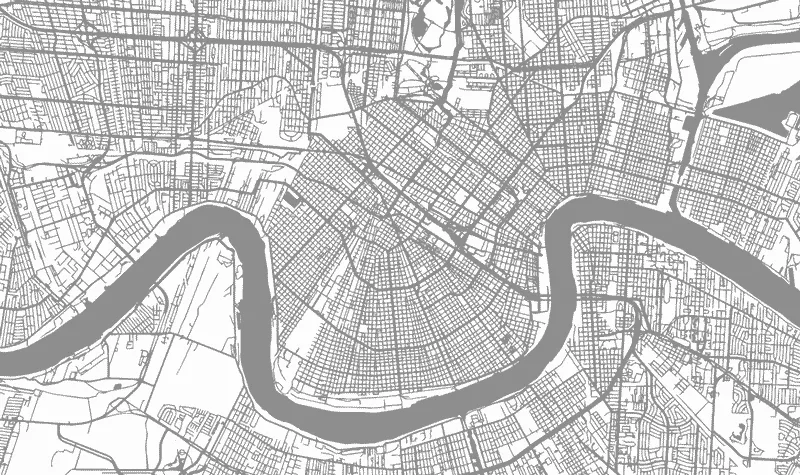
Before I moved here to join Tulane’s interdisciplinary City, Culture, and Community doctoral program, someone told me that New Orleans is a city practiced at reckoning with ghosts. Sure, this lyrical appraisal fits a historic Southern Gothic city where popular ghost tours pass through the French Quarter every night, but it fits the patterns of everyday life, too. Neighborhood boundaries frequently echo and reinforce decades of redlining and segregation, wooden homes balance on cinder block stilts because the ground below may disappear beneath water after a hard rain, and flood lines and spray-painted symbols tattoo the past upon the present.
This city lives with these known ghosts, but new ones have arrived, brimming with premonitions of a more waterlogged future. These new specters float in ever closer from the Gulf, as natural barriers of coastal wetlands insulating the city melt away at an unprecedented rate; they ride downstream on the Mississippi River, which has been flowing through town at a higher level for a longer period than anyone can remember. They overstay their welcome in the days after heavy rains, rearranging the ground beneath the city and bumping up against the older ghosts.
And yet, life in New Orleans continues apace: the city incorporates these new ghosts into its everyday patterns. When streets, cars, and houses take on water, and as neighbors dry off, conversations assessing and reassessing losses echo how “these things happen.” The loss is a form of dues paid to live in this city. We present these individually borne losses to one another as one more set of extreme experiences in the Gulf, but if we listen to our colleagues in the natural sciences, we know that these events and intensifications are facets of a new normal. We know these challenges are here to stay.
My work in the social sciences takes on these changes quite literally, and I’ve worked with several research initiatives at Tulane to study how we understand “home” amid looming upheaval. With the Consortium for Resilient Gulf Communities, I surveyed disaster resilience among rural populations affected by multiple hurricanes and the 2010 BP oil spill, and the data affirmed that social networks and social bonds buoy individuals navigating combinations of natural and technological disasters. Learning from Gulf residents whose experiences preparing (and often restructuring) their homes—the communities, economies, and landscapes where they dwell—confirmed to me that while the past will continue to push into a future characterized by loss of the familiar, practices of mutual aid provide hope. As a Mellon Graduate Fellow, I work in partnership with the Louisiana Environmental Action Network to document and archive decades of environmental justice struggles across the state. And with the School of Liberal Arts’ emerging Critical Visualization and Media Lab, I am working with a group of students and faculty using digital techniques to help tell the stories of New Orleans residents petitioning for fully-funded relocation away from the toxic chemicals leaching into their homes from the ground below.
I came to southern Louisiana to learn the tools that social scientists use to listen to a world in the midst of big changes. These analytical tools, designed to categorize a recognizably unjust world, hold the potential to imagine how we can better tether ourselves to one another in anticipation of changed home and landscape. How might the old ghosts of this city teach us to move toward one another as we face increasingly imaginable losses? No single discipline can explain New Orleans’ past or future, but the social sciences provide a toolkit to listen to the signs of change so that we might support one another as we leave much of what is familiar, even as we stay at home.

